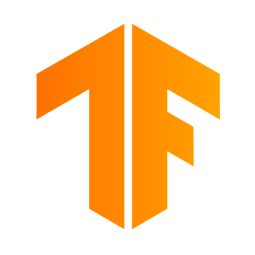🚀 We are granting pilot access to Ivy's Compiler and Transpiler to some users, join the waitlist if you want to test them out!
Ivy is both an ML transpiler and a framework, currently supporting JAX, TensorFlow, PyTorch and Numpy.
Ivy unifies all ML frameworks 💥 enabling you not only to write code that can be used with any of these frameworks as the backend, but also to convert 🔄 any function, model or library written in any of them to your preferred framework!
You can check out Ivy as a transpiler and Ivy as a framework to learn more about this, try out Ivy straight away going through the Setting up Ivy section, or dive deep into Ivy's Documentation and Examples!
If you would like to contribute, you can join our growing Community 🌍, check out our Contributing guide, and take a look at the open tasks if you'd like to dive straight in 🧑💻
Let's unify.ai together 🦾
Ivy's transpiler allows you to use code from any other framework (or from any other version of the same framework!) in your own code, by just adding one line of code. Under the hood, Ivy traces a computational graph and leverages the frontends and backends to link one framework to another.
This way, Ivy makes all ML-related projects available for you, independently of the framework you want to use to research, develop, or deploy systems. Feel free to head over to the docs for the full API reference, but the functions you'd most likely want to use are:
# Compiles a function into an efficient fully-functional graph, removing all wrapping and redundant code
ivy.compile()
# Converts framework-specific code to a different framework
ivy.transpile()
# Converts framework-specific code to Ivy
ivy.unify()These functions can be used eagerly or lazily. If you pass the necessary arguments for function tracing, the compilation/transpilation step will happen instantly (eagerly). Otherwise, the compilation/transpilation will happen only when the returned function is first invoked.
import ivy
import jax
ivy.set_backend("jax")
# Simple JAX function to transpile
def test_fn(x):
return jax.numpy.sum(x)
x1 = ivy.array([1., 2.])# Arguments are available -> transpilation happens eagerly
eager_graph = ivy.transpile(test_fn, source="jax", to="torch", args=(x1,))
# eager_graph is now torch code and runs efficiently
ret = eager_graph(x1)# Arguments are not available -> transpilation happens lazily
lazy_graph = ivy.transpile(test_fn, source="jax", to="torch")
# The transpiled graph is initialized, transpilation will happen here
ret = lazy_graph(x1)
# lazy_graph is now torch code and runs efficiently
ret = lazy_graph(x1)If you want to learn more, you can find more information in the Ivy as a transpiler section of the docs!
If you want to use building blocks published in other frameworks (neural networks, layers, array computing libraries, training pipelines...), you want to integrate code developed in various frameworks, or maybe straight up move code from one framework to another, the transpiler is definitely the tool 🔧 for the job! As the output of transpilation is native code in the target framework, you can use the converted code just as if it was code originally developed in that framework, applying framework-specific optimizations or tools, instantly exposing your project to all of the unique perks of a different framework.
The Ivy framework is built on top of various essential components, mainly the Backend Handler, which manages what framework is being used behind the scenes and the Backend Functional APIs, which provide framework-specific implementations of the Ivy functions. Likewise, classes such as ivy.Container or ivy.Array are also available, facilitating the use of structured data and array-like objects (learn more about them here!).
All of the functionalities in Ivy are exposed through the Ivy functional API and the Ivy stateful API. All functions in the Functional API are Framework Agnostic Functions, which mean that we can use them like this:
import ivy
import jax.numpy as jnp
import tensorflow as tf
import numpy as np
import torch
def mse_loss(y, target):
return ivy.mean((y - target)**2)
jax_mse = mse_loss(jnp.ones((5,)), jnp.ones((5,)))
tf_mse = mse_loss(tf.ones((5,)), tf.ones((5,)))
np_mse = mse_loss(np.ones((5,)), np.ones((5,)))
torch_mse = mse_loss(torch.ones((5,)), torch.ones((5,)))In the example above we show how Ivy's functions are compatible with tensors from different frameworks. This is the same for ALL Ivy functions. They can accept tensors from any framework and return the correct result.
The Ivy Stateful API, on the other hand, allows you to define trainable modules and layers, which you can use alone or as a part of any other framework code!
import ivy
class Regressor(ivy.Module):
def __init__(self, input_dim, output_dim):
self.input_dim = input_dim
self.output_dim = output_dim
super().__init__()
def _build(self, *args, **kwargs):
self.linear0 = ivy.Linear(self.input_dim, 128)
self.linear1 = ivy.Linear(128, self.output_dim)
def _forward(self, x):
x = self.linear0(x)
x = ivy.functional.relu(x)
x = self.linear1(x)
return xIf we put it all together, we'll have something like this. This example uses PyTorch as the backend, but this can easily be changed to your favorite framework, such as TensorFlow, or JAX.
import ivy
class Regressor(ivy.Module):
def __init__(self, input_dim, output_dim):
self.input_dim = input_dim
self.output_dim = output_dim
super().__init__()
def _build(self, *args, **kwargs):
self.linear0 = ivy.Linear(input_dim, 128)
self.linear1 = ivy.Linear(128, output_dim)
def _forward(self, x):
x = self.linear0(x)
x = ivy.functional.relu(x)
x = self.linear1(x)
return x
ivy.set_backend('torch') # set backend to PyTorch (or any other backend!)
model = Regressor(input_dim=1, output_dim=1)
optimizer = ivy.Adam(0.3)
n_training_examples = 2000
noise = ivy.random.random_normal(shape=(n_training_examples, 1), mean=0, std=0.1)
x = ivy.linspace(-6, 3, n_training_examples).reshape((n_training_examples, 1))
y = 0.2 * x ** 2 + 0.5 * x + 0.1 + noise
def loss_fn(pred, target):
return ivy.mean((pred - target) ** 2)
for epoch in range(40):
# forward pass
pred = model(x)
# compute loss and gradients
loss, grads = ivy.execute_with_gradients(lambda v: loss_fn(pred, y), model.v)
# update parameters
model.v = optimizer.step(model.v, grads)
# print current loss
print(f'Epoch: {epoch + 1:2d} --- Loss: {ivy.to_numpy(loss).item():.5f}')
print('Finished training!')The model's output can be visualized as follows:
Last but not least, we are also working on specific extension totally written in Ivy and therefore usable within any framework, covering topics like Mechanics, Computer Vision, Robotics, a Reinforcement Learning Gym, Memory and implementation of various Models or Builder tools with trainers, data loaders and more!
As always, you can find more information about Ivy as a framework in the docs!
As Ivy supports multiple backends, writing code in Ivy breaks you free from framework limitations. If you want to publish highly flexible code for everyone to use, independently of the framework they are using, or you plan to develop ML-related tools and want them to be interoperable with not only the already existing frameworks, but also with future frameworks, then Ivy is for you!
There are various ways to use Ivy, depending on your preferred environment:
The easiest way to set up Ivy is to install it using pip with the following command:
pip install ivy-coreor alternatively:
python3 -m pip install ivy-coreIf you prefer to use containers, we also have pre-built Docker images with all the supported frameworks and some relevant packages already installed, which you can pull from:
docker pull unifyai/ivy:latestIf you are working on a GPU device, you can pull from:
docker pull unifyai/ivy:latest-gpuYou can also install Ivy from source if you want to take advantage of the latest changes, but we can't ensure everything will work as expected. 😅
git clone https://github.com/unifyai/ivy.git
cd ivy
pip install --user -e .or alternatively, for the last step:
python3 -m pip install --user -e .If you want to set up testing and various frameworks it's probably best to check out the Contributing - Setting Up page, where OS-specific and IDE-specific instructions and video tutorials to do so are available!
You can find quite a lot more examples in the corresponding section below, but using Ivy is as simple as:
import ivy
import torch
import jax
ivy.set_backend("jax")
x = jax.numpy.array([1, 2, 3])
y = jax.numpy.array([3, 2, 1])
z = ivy.add(x, y)
ivy.set_backend('torch')
x = torch.tensor([1, 2, 3])
y = torch.tensor([3, 2, 1])
z = ivy.add(x, y)import ivy
import torch
import jax
def jax_fn(x):
a = jax.numpy.dot(x, x)
b = jax.numpy.mean(x)
return x * a + b
jax_x = jax.numpy.array([1, 2, 3])
torch_x = torch.tensor([1, 2, 3])
torch_fn = ivy.transpile(jax_fn, source="jax", to="torch", args=(jax_x,))
ret = torch_fn(torch_x)The Ivy Docs page holds all the relevant information about Ivy's and it's framework API reference.
There, you will find the Design page, which is a user-focused guide about the architecture and the building blocks of Ivy. Likewise, you can take a look at the Deep dive, which is oriented towards potential contributors of the code base and explains the nuances of Ivy in full detail 🔎
Another important sections of the docs is Background, which contextualises the problem Ivy is trying to solve and the current ML Explosion, explaining both (1) why is important to solve this problem and (2) how we are adhering to existing standards to make this happen.
Lastly, you can also find there the Related Work section, which paints a clear picture of the role Ivy plays in the ML stack, comparing it to other existing solutions in terms of functionalities and level.
The Examples page features a wide range of demos and tutorials showcasing the functionalities of Ivy along with multiple use cases, but feel free to check out some shorter framework-specific examples here ⬇️
I'm using PyTorch 
You can use Ivy to get PyTorch code from:Any model
From TensorFlow
import ivy import torch import tensorflow as tf # Get a pretrained keras model eff_encoder = tf.keras.applications.efficientnet_v2.EfficientNetV2B0( include_top=False, weights="imagenet", input_shape=(224, 224, 3) ) # Transpile it into a torch.nn.Module with the corresponding parameters noise = tf.random.normal(shape=(1, 224, 224, 3)) torch_eff_encoder = ivy.transpile(eff_encoder, to="torch", args=(noise,)) # Build a classifier using the transpiled encoder class Classifier(torch.nn.Module): def __init__(self, num_classes=20): super(Classifier, self).__init__() self.encoder = torch_eff_encoder self.fc = torch.nn.Linear(1280, num_classes) def forward(self, x): x = self.encoder(x) return self.fc(x) # Initialize a trainable, customizable, torch.nn.Module classifier = Classifier() ret = classifier(torch.rand((1, 244, 244, 3)))From JAX
import ivy import jax import torch # Get a pretrained haiku model # https://unify.ai/demos/scripts/deepmind_perceiver_io.py from deepmind_perceiver_io import key, perceiver_backbone # Transpile it into a torch.nn.Module with the corresponding parameters dummy_input = jax.random.uniform(key, shape=(1, 3, 224, 224)) params = perceiver_backbone.init(rng=key, images=dummy_input) backbone = ivy.transpile( perceiver_backbone, to="torch", params_v=params, kwargs={"images": dummy_input} ) # Build a classifier using the transpiled backbone class PerceiverIOClassifier(torch.nn.Module): def __init__(self, num_classes=20): super(PerceiverIOClassifier, self).__init__() self.backbone = backbone self.max_pool = torch.nn.MaxPool2d((512, 1)) self.flatten = torch.nn.Flatten() self.fc = torch.nn.Linear(1024, num_classes) def forward(self, x): x = self.backbone(images=x) x = self.flatten(self.max_pool(x)) return self.fc(x) # Initialize a trainable, customizable, torch.nn.Module classifier = PerceiverIOClassifier() ret = classifier(torch.rand((1, 3, 224, 224)))Any library
From Tensorflow
import ivy import torch import os os.environ["SM_FRAMEWORK"] = "tf.keras" import segmentation_models as sm # transpile sm from tensorflow to torch torch_sm = ivy.transpile(sm, source="tensorflow", to="torch") # get some image-like arrays output = torch.rand((1, 3, 512, 512)) target = torch.rand((1, 3, 512, 512)) # and use the transpiled version of any function from the library! out = torch_sm.metrics.iou_score(output, target)From JAX
import ivy import rax import torch # transpile rax from jax to torch torch_rax = ivy.transpile(rax, source="jax", to="torch") # get some arrays scores = torch.tensor([2.2, 1.3, 5.4]) labels = torch.tensor([1.0, 0.0, 0.0]) # and use the transpiled version of any function from the library! out = torch_rax.poly1_softmax_loss(scores, labels)From NumPy
import ivy import torch import madmom # transpile madmon from numpy to torch torch_madmom = ivy.transpile(madmom, source="numpy", to="torch") # get some arrays freqs = torch.arange(20) * 10 # and use the transpiled version of any function from the library! out = torch_madmom.audio.filters.hz2midi(freqs)Any function
From Tensorflow
import ivy import tensorflow as tf import torch def loss(predictions, targets): return tf.sqrt(tf.reduce_mean(tf.square(predictions - targets))) # transpile any function from tf to torch torch_loss = ivy.transpile(loss, source="tensorflow", to="torch") # get some arrays p = torch.tensor([3.0, 2.0, 1.0]) t = torch.tensor([0.0, 0.0, 0.0]) # and use the transpiled version! out = torch_loss(p, t)From JAX
import ivy import jax.numpy as jnp import torch def loss(predictions, targets): return jnp.sqrt(jnp.mean((predictions - targets) ** 2)) # transpile any function from jax to torch torch_loss = ivy.transpile(loss, source="jax", to="torch") # get some arrays p = torch.tensor([3.0, 2.0, 1.0]) t = torch.tensor([0.0, 0.0, 0.0]) # and use the transpiled version! out = torch_loss(p, t)From NumPy
import ivy import numpy as np import torch def loss(predictions, targets): return np.sqrt(np.mean((predictions - targets) ** 2)) # transpile any function from numpy to torch torch_loss = ivy.transpile(loss, source="numpy", to="torch") # get some arrays p = torch.tensor([3.0, 2.0, 1.0]) t = torch.tensor([0.0, 0.0, 0.0]) # and use the transpiled version! out = torch_loss(p, t)
I'm using TensorFlow 
You can use Ivy to get TensorFlow code from:Any model
From PyTorch
import ivy import torch import timm import tensorflow as tf # Get a pretrained pytorch model mlp_encoder = timm.create_model("mixer_b16_224", pretrained=True, num_classes=0) # Transpile it into a keras.Model with the corresponding parameters noise = torch.randn(1, 3, 224, 224) mlp_encoder = ivy.transpile(mlp_encoder, to="tensorflow", args=(noise,)) # Build a classifier using the transpiled encoder class Classifier(tf.keras.Model): def __init__(self): super(Classifier, self).__init__() self.encoder = mlp_encoder self.output_dense = tf.keras.layers.Dense(units=1000, activation="softmax") def call(self, x): x = self.encoder(x) return self.output_dense(x) # Transform the classifier and use it as a standard keras.Model x = tf.random.normal(shape=(1, 3, 224, 224)) model = Classifier() ret = model(x)From JAX
import ivy import jax import tensorflow as tf # Get a pretrained haiku model # https://unify.ai/demos/scripts/deepmind_perceiver_io.py from deepmind_perceiver_io import key, perceiver_backbone # Transpile it into a tf.keras.Model with the corresponding parameters dummy_input = jax.random.uniform(key, shape=(1, 3, 224, 224)) params = perceiver_backbone.init(rng=key, images=dummy_input) backbone = ivy.transpile( perceiver_backbone, to="tensorflow", params_v=params, args=(dummy_input,) ) # Build a classifier using the transpiled backbone class PerceiverIOClassifier(tf.keras.Model): def __init__(self, num_classes=20): super(PerceiverIOClassifier, self).__init__() self.backbone = backbone self.max_pool = tf.keras.layers.MaxPooling1D(pool_size=512) self.flatten = tf.keras.layers.Flatten() self.fc = tf.keras.layers.Dense(num_classes) def call(self, x): x = self.backbone(x) x = self.flatten(self.max_pool(x)) return self.fc(x) # Initialize a trainable, customizable, tf.keras.Model x = tf.random.normal(shape=(1, 3, 224, 224)) classifier = PerceiverIOClassifier() ret = classifier(x)Any library
From PyTorch
import ivy import kornia import requests import numpy as np import tensorflow as tf from PIL import Image # transpile kornia from torch to tensorflow tf_kornia = ivy.transpile(kornia, source="torch", to="tensorflow") # get an image url = "http://images.cocodataset.org/train2017/000000000034.jpg" raw_img = Image.open(requests.get(url, stream=True).raw) # convert it to the format expected by kornia img = np.array(raw_img) img = tf.transpose(tf.constant(img), (2, 0, 1)) img = tf.expand_dims(img, 0) / 255 # and use the transpiled version of any function from the library! out = tf_kornia.enhance.sharpness(img, 5)From JAX
import ivy import rax import tensorflow as tf # transpile rax from jax to tensorflow tf_rax = ivy.transpile(rax, source="jax", to="tensorflow") # get some arrays scores = tf.constant([2.2, 1.3, 5.4]) labels = tf.constant([1.0, 0.0, 0.0]) # and use the transpiled version of any function from the library! out = tf_rax.poly1_softmax_loss(scores, labels)From NumPy
import ivy import madmom import tensorflow as tf # transpile madmom from numpy to tensorflow tf_madmom = ivy.transpile(madmom, source="numpy", to="tensorflow") # get some arrays freqs = tf.range(20) * 10 # and use the transpiled version of any function from the library! out = tf_madmom.audio.filters.hz2midi(freqs)Any function
From PyTorch
import ivy import torch import tensorflow as tf def loss(predictions, targets): return torch.sqrt(torch.mean((predictions - targets) ** 2)) # transpile any function from torch to tensorflow tf_loss = ivy.transpile(loss, source="torch", to="tensorflow") # get some arrays p = tf.constant([3.0, 2.0, 1.0]) t = tf.constant([0.0, 0.0, 0.0]) # and use the transpiled version! out = tf_loss(p, t)From JAX
import ivy import jax.numpy as jnp import tensorflow as tf def loss(predictions, targets): return jnp.sqrt(jnp.mean((predictions - targets) ** 2)) # transpile any function from jax to tensorflow tf_loss = ivy.transpile(loss, source="jax", to="tensorflow") # get some arrays p = tf.constant([3.0, 2.0, 1.0]) t = tf.constant([0.0, 0.0, 0.0]) # and use the transpiled version! out = tf_loss(p, t)From NumPy
import ivy import numpy as np import tensorflow as tf def loss(predictions, targets): return np.sqrt(np.mean((predictions - targets) ** 2)) # transpile any function from numpy to tensorflow tf_loss = ivy.transpile(loss, source="numpy", to="tensorflow") # get some arrays p = tf.constant([3.0, 2.0, 1.0]) t = tf.constant([0.0, 0.0, 0.0]) # and use the transpiled version! out = tf_loss(p, t)
I'm using Jax 
You can use Ivy to get JAX code from:Any model
From PyTorch
import ivy import timm import torch import jax import haiku as hk # Get a pretrained pytorch model mlp_encoder = timm.create_model("mixer_b16_224", pretrained=True, num_classes=0) # Transpile it into a hk.Module with the corresponding parameters noise = torch.randn(1, 3, 224, 224) mlp_encoder = ivy.transpile(mlp_encoder, to="jax", args=(noise,)) # Build a classifier using the transpiled encoder class Classifier(hk.Module): def __init__(self, num_classes=1000): super(Classifier, self).__init__() self.encoder = mlp_encoder() self.fc = hk.Linear(output_size=num_classes, with_bias=True) def __call__(self, x): x = self.encoder(x) x = self.fc(x) return x def _forward_classifier(x): module = Classifier() return module(x) # Transform the classifier and use it as a standard hk.Module rng_key = jax.random.PRNGKey(42) x = jax.random.uniform(key=rng_key, shape=(1, 3, 224, 224), dtype=jax.numpy.float32) forward_classifier = hk.transform(_forward_classifier) params = forward_classifier.init(rng=rng_key, x=x) ret = forward_classifier.apply(params, None, x)From TensorFlow
import ivy import jax import haiku as hk import tensorflow as tf # Get a pretrained keras model eff_encoder = tf.keras.applications.efficientnet_v2.EfficientNetV2B0( include_top=False, weights="imagenet", input_shape=(224, 224, 3) ) # Transpile it into a hk.Module with the corresponding parameters noise = tf.random.normal(shape=(1, 224, 224, 3)) hk_eff_encoder = ivy.transpile(eff_encoder, to="jax", args=(noise,)) # Build a classifier using the transpiled encoder class Classifier(hk.Module): def __init__(self, num_classes=1000): super(Classifier, self).__init__() self.encoder = hk_eff_encoder() self.fc = hk.Linear(output_size=num_classes, with_bias=True) def __call__(self, x): x = self.encoder(x) x = self.fc(x) return x def _forward_classifier(x): module = Classifier() return module(x) # Transform the classifier and use it as a standard hk.Module rng_key = jax.random.PRNGKey(42) dummy_x = jax.random.uniform(key=rng_key, shape=(1, 224, 224, 3)) forward_classifier = hk.transform(_forward_classifier) params = forward_classifier.init(rng=rng_key, x=dummy_x) ret = forward_classifier.apply(params, None, dummy_x)Any library
From PyTorch
import ivy import kornia import requests import jax.numpy as jnp from PIL import Image # transpile kornia from torch to jax jax_kornia = ivy.transpile(kornia, source="torch", to="jax") # get an image url = "http://images.cocodataset.org/train2017/000000000034.jpg" raw_img = Image.open(requests.get(url, stream=True).raw) # convert it to the format expected by kornia img = jnp.transpose(jnp.array(raw_img), (2, 0, 1)) img = jnp.expand_dims(img, 0) / 255 # and use the transpiled version of any function from the library! out = jax_kornia.enhance.sharpness(img, 5)From TensorFlow
import ivy import jax import os os.environ["SM_FRAMEWORK"] = "tf.keras" import segmentation_models as sm # transpile sm from tensorflow to jax jax_sm = ivy.transpile(sm, source="tensorflow", to="jax") # get some image-like arrays key = jax.random.PRNGKey(23) key1, key2 = jax.random.split(key) output = jax.random.uniform(key1, (1, 3, 512, 512)) target = jax.random.uniform(key2, (1, 3, 512, 512)) # and use the transpiled version of any function from the library! out = jax_sm.metrics.iou_score(output, target)From NumPy
import ivy import madmom import jax.numpy as jnp # transpile madmon from numpy to jax jax_madmom = ivy.transpile(madmom, source="numpy", to="jax") # get some arrays freqs = jnp.arange(20) * 10 # and use the transpiled version of any function from the library! out = jax_madmom.audio.filters.hz2midi(freqs)Any function
From PyTorch
import ivy import torch import jax.numpy as jnp def loss(predictions, targets): return torch.sqrt(torch.mean((predictions - targets) ** 2)) # transpile any function from torch to jax jax_loss = ivy.transpile(loss, source="torch", to="jax") # get some arrays p = jnp.array([3.0, 2.0, 1.0]) t = jnp.array([0.0, 0.0, 0.0]) # and use the transpiled version! out = jax_loss(p, t)From TensorFlow
import ivy import tensorflow as tf import jax.numpy as jnp def loss(predictions, targets): return tf.sqrt(tf.reduce_mean(tf.square(predictions - targets))) # transpile any function from tf to jax jax_loss = ivy.transpile(loss, source="tensorflow", to="jax") # get some arrays p = jnp.array([3.0, 2.0, 1.0]) t = jnp.array([0.0, 0.0, 0.0]) # and use the transpiled version! out = jax_loss(p, t)From NumPy
import ivy import numpy as np import jax import jax.numpy as jnp jax.config.update('jax_enable_x64', True) def loss(predictions, targets): return np.sqrt(np.mean((predictions - targets) ** 2)) # transpile any function from numpy to jax jax_loss = ivy.transpile(loss, source="numpy", to="jax") # get some arrays p = jnp.array([3.0, 2.0, 1.0]) t = jnp.array([0.0, 0.0, 0.0]) # and use the transpiled version! out = jax_loss(p, t)
I'm using NumPy 
You can use Ivy to get NumPy code from:Any library
From PyTorch
import ivy import kornia import requests import numpy as np from PIL import Image # transpile kornia from torch to np np_kornia = ivy.transpile(kornia, source="torch", to="numpy") # get an image url = "http://images.cocodataset.org/train2017/000000000034.jpg" raw_img = Image.open(requests.get(url, stream=True).raw) # convert it to the format expected by kornia img = np.transpose(np.array(raw_img), (2, 0, 1)) img = np.expand_dims(img, 0) / 255 # and use the transpiled version of any function from the library! out = np_kornia.enhance.sharpness(img, 5)From TensorFlow
import ivy import numpy as np import os os.environ["SM_FRAMEWORK"] = "tf.keras" import segmentation_models as sm # transpile sm from tensorflow to numpy np_sm = ivy.transpile(sm, source="tensorflow", to="numpy") # get some image-like arrays output = np.random.rand(1, 3, 512, 512).astype(dtype=np.float32) target = np.random.rand(1, 3, 512, 512).astype(dtype=np.float32) # and use the transpiled version of any function from the library! out = np_sm.metrics.iou_score(output, target)From Jax
import ivy import rax import numpy as np # transpile rax from jax to numpy np_rax = ivy.transpile(rax, source="jax", to="numpy") # get some arrays scores = np.array([2.2, 1.3, 5.4]) labels = np.array([1.0, 0.0, 0.0]) # and use the transpiled version of any function from the library! out = np_rax.poly1_softmax_loss(scores, labels)Any function
From PyTorch
import ivy import torch import numpy as np def loss(predictions, targets): return torch.sqrt(torch.mean((predictions - targets) ** 2)) # transpile any function from torch to numpy np_loss = ivy.transpile(loss, source="torch", to="numpy") # get some arrays p = np.array([3.0, 2.0, 1.0]) t = np.array([0.0, 0.0, 0.0]) # and use the transpiled version! out = np_loss(p, t)From TensorFlow
import ivy import tensorflow as tf import numpy as np def loss(predictions, targets): return tf.sqrt(tf.reduce_mean(tf.square(predictions - targets))) # transpile any function from tf to numpy np_loss = ivy.transpile(loss, source="tensorflow", to="numpy") # get some arrays p = np.array([3.0, 2.0, 1.0]) t = np.array([0.0, 0.0, 0.0]) # and use the transpiled version! out = np_loss(p, t)From JAX
import ivy import jax.numpy as jnp import numpy as np def loss(predictions, targets): return jnp.sqrt(jnp.mean((predictions - targets) ** 2)) # transpile any function from jax to numpy np_loss = ivy.transpile(loss, source="jax", to="numpy") # get some arrays p = np.array([3.0, 2.0, 1.0]) t = np.array([0.0, 0.0, 0.0]) # and use the transpiled version! out = np_loss(p, t)
Or you can use Ivy as a framework, breaking yourself (and your code) free from deciding which community to support, allowing anyone to run your code in their framework of choice!
import ivy
# a simple image classification model
class IvyNet(ivy.Module):
def __init__(
self,
h_w=(32, 32),
input_channels=3,
output_channels=512,
num_classes=2,
data_format="NCHW",
device="cpu",
):
self.h_w = h_w
self.input_channels = input_channels
self.output_channels = output_channels
self.num_classes = num_classes
self.data_format = data_format
self.device = device
super().__init__()
def _build(self, *args, **kwargs):
self.extractor = ivy.Sequential(
ivy.Conv2D(self.input_channels, 6, [5, 5], 1, "SAME", data_format=self.data_format),
ivy.GELU(),
ivy.Conv2D(6, 16, [5, 5], 1, "SAME", data_format=self.data_format),
ivy.GELU(),
ivy.Conv2D(16, self.output_channels, [5, 5], 1, "SAME", data_format=self.data_format),
ivy.GELU(),
)
self.classifier = ivy.Sequential(
# since padding is "SAME", this would be image_height x image_width x output_channels
ivy.Linear(self.h_w[0] * self.h_w[1] * self.output_channels, 512),
ivy.GELU(),
ivy.Linear(512, self.num_classes),
)
def _forward(self, x):
x = self.extractor(x)
# flatten all dims except batch dim
x = ivy.flatten(x, start_dim=1, end_dim=-1)
logits = self.classifier(x)
probs = ivy.softmax(logits)
return logits, probsAfter building your model in Ivy, you can set your favourite framework as the backend to use its operations under the hood!
ivy.set_backend("torch")
model = IvyNet()
x = torch.randn(1, 3, 32, 32)
logits, probs = model(x)ivy.set_backend("tensorflow")
model = IvyNet()
x = tf.random.uniform(shape=(1, 3, 32, 32))
logits, probs = model(x)ivy.set_backend("jax")
model = IvyNet()
x = jax.random.uniform(key, shape=(1, 3, 32, 32))
logits, probs = model(x)ivy.set_backend("numpy")
model = IvyNet()
x = np.random.uniform(size=(1, 3, 32, 32))
logits, probs = model(x)Last but not least, we can also build the training pipeline in pure ivy ⬇️
Let's define some helper functions first
# helper function for loading the dataset in batches
def generate_batches(images, classes, dataset_size, batch_size=32):
targets = {k: v for v, k in enumerate(np.unique(classes))}
y_train = [targets[classes[i]] for i in range(len(classes))]
if batch_size > dataset_size:
raise ivy.utils.exceptions.IvyError("Use a smaller batch size")
for idx in range(0, dataset_size, batch_size):
yield ivy.stack(images[idx : min(idx + batch_size, dataset_size)]), ivy.array(
y_train[idx : min(idx + batch_size, dataset_size)]
)
# helper function to get the number of current predictions
def num_correct(preds, labels):
return (preds.argmax() == labels).sum().to_numpy().item()
# define a loss function
def loss_fn(params):
v, model, x, y = params
y_pred, probs = model(x)
return ivy.cross_entropy(y, probs), probsAnd train this model!
# train the model on gpu if it's available
device = "cuda:0" if ivy.gpu_is_available() else "cpu"
model = IvyNet(
h_w=(28, 28),
input_channels=1,
output_channels=120,
num_classes=num_classes,
device=device,
)
model_name = type(model).__name__.lower()
# training hyperparams
optimizer= ivy.Adam(1e-4)
batch_size = 64
num_epochs = 20
num_classes = 10
# training loop
def train(images, classes, epochs, model, device, num_classes=10, batch_size=32):
# training metrics
epoch_loss = 0.0
running_loss = 0.0
fields = ["epoch", "epoch_loss", "training_accuracy"]
metrics = []
dataset_size = len(images)
for epoch in range(epochs):
train_loss, train_correct = 0, 0
train_loop = tqdm(
generate_batches(images, classes, len(images), batch_size=batch_size),
total=dataset_size // batch_size,
position=0,
leave=True,
)
for xbatch, ybatch in train_loop:
if device != "cpu":
xbatch, ybatch = xbatch.to_device("gpu:0"), ybatch.to_device("gpu:0")
# since the cross entropy function expects the target classes to be in one-hot encoded format
ybatch_encoded = ivy.one_hot(ybatch, num_classes)
# update model params
loss_probs, grads = ivy.execute_with_gradients(
loss_fn,
(model.v, model, xbatch, ybatch_encoded),
ret_grad_idxs=[[0]],
xs_grad_idxs=[[0]],
)
model.v = optimizer.step(model.v, grads["0"])
batch_loss = ivy.to_numpy(loss_probs[0]).mean().item() # batch mean loss
epoch_loss += batch_loss * xbatch.shape[0]
train_correct += num_correct(loss_probs[1], ybatch)
train_loop.set_description(f"Epoch [{epoch + 1:2d}/{epochs}]")
train_loop.set_postfix(
running_loss=batch_loss,
accuracy_percentage=(train_correct / dataset_size) * 100,
)
epoch_loss = epoch_loss / dataset_size
training_accuracy = train_correct / dataset_size
metrics.append([epoch, epoch_loss, training_accuracy])
train_loop.write(
f"\nAverage training loss: {epoch_loss:.6f}, Train Correct: {train_correct}",
end="\n",
)
# write metrics for plotting
with open(f"/{model_name}_train_summary.csv", "w") as f:
f = csv.writer(f)
f.writerow(fields)
f.writerows(metrics)
# assuming the dataset(images and classes) are already prepared in a folder
train(images, classes, num_epochs, model, device, num_classes = num_classes, batch_size = batch_size)We believe that everyone can contribute and make a difference. Whether it's writing code 💻, fixing bugs 🐛, or simply sharing feedback 💬, your contributions are definitely welcome and appreciated 🙌
Check out all of our open tasks, and find out more info in our Contributing guide in the docs!
Join our amazing community as a code contributor, and help accelerate our journey to unify all ML frameworks!
In order to achieve the ambitious goal of unifying AI we definitely need as many hands as possible on it! Whether you are a seasoned developer or just starting out, you'll find a place here! Join the Ivy community in our Discord 👾 server, which is the perfect place to ask questions, share ideas, and get help from both fellow developers and the Ivy Team directly!
Also! Feel free to follow us in Twitter 🐦 as well, we use it to share updates, sneak peeks, and all sorts of relevant news, certainly a great way to stay in the loop 😄
Can't wait to see you there!
If you use Ivy for your work, please don't forget to give proper credit by including the accompanying paper 📄 in your references. It's a small way to show appreciation and help to continue to support this and other open source projects 🙌
@article{lenton2021ivy,
title={Ivy: Templated deep learning for inter-framework portability},
author={Lenton, Daniel and Pardo, Fabio and Falck, Fabian and James, Stephen and Clark, Ronald},
journal={arXiv preprint arXiv:2102.02886},
year={2021}
}

























